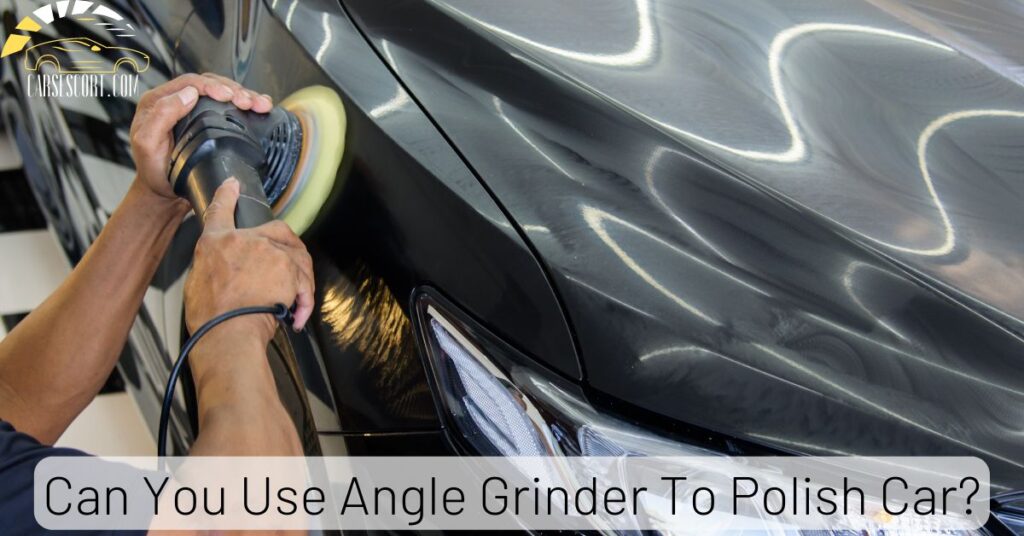If you’re a car enthusiast or a DIYer looking to give your vehicle a shiny, professional-looking finish, you may have wondered if you can use a drill to wax your car. It’s no secret that waxing your car is essential in maintaining its appearance and protecting its paint from the elements. But can a drill, typically used for drilling holes or driving screws, really be used as a tool for waxing?
Yes, an angle grinder with a car polishing and buffing pad can be used to polish a car when operating between 1500 and 2500 RPM, but it requires the proper technique and tools to avoid damaging the car’s paint finish. Using an angle grinder on your car’s paint without proper technique and caution can cause more harm than benefit.
The high-speed rotation of an angle grinder combined with abrasive pads or discs can quickly remove paint and cause scratches or swirl marks, leading to irreversible damage to your car’s finish.
Key Takeaways
- An angle grinder can be used as a polishing machine for car polishing and waxing.
- Use a standard household drill with a car polishing and buffing pad.
- Choose a standard 3/8″ drill bit and operate it between 1500 and 2500 RPM.
- Apply gentle pressure to avoid uneven polishing or burning of the paint.
- Improper use of polishing tools can harm more than benefit.
Can You Use Angle Grinder To Polish Car?
Angle grinder can be used to polish a car, but it requires the proper technique and tools to avoid damaging the car’s paint finish. Use a foam or wool polishing pad specifically designed for automotive use. When using the drills as rotary polishing machines, avoid using abrasive grinding discs or pads, which can cause scratches or swirl marks on the car’s paint.
Adjust the speed and pressure of the drill for polishing or waxing your vehicle. Angle grinders typically have adjustable speed settings. Use a lower variable speed settings (between 1500-2500 RPM) for car polishing, as high speeds can generate excess heat and friction that may damage the paint.
Apply even and consistent pressure to avoid uneven polishing or burning of the paint.
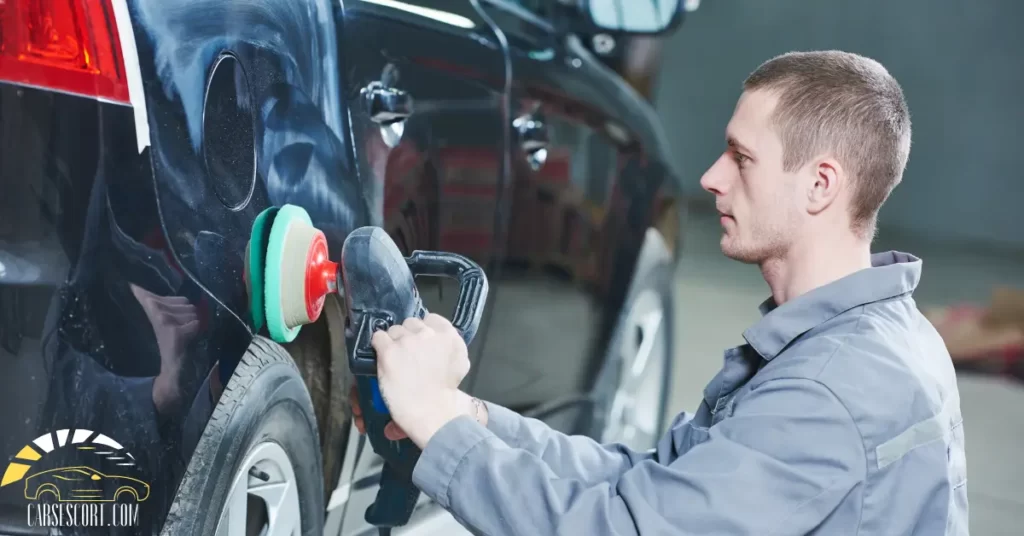
How to polish a car with a drill.
A car can be polished with a drill using a few key steps and the right tools to achieve a smooth and glossy finish. Here is a detailed guide on how to polish a car with a drill and make it a very useful tool:
Step 1: Gather the necessary materials and tools.
What tool do you use to polish a car?
You will need the following materials and a few tools:
1) Polishing Compound
Choose a high-quality automotive compound appropriate for your car’s paint type and condition. Different types of compounds are available, such as rubbing compounds for heavier defects and polishing compounds for milder defects.
2) Polishing Pad
Select a foam or wool polishing pad specifically designed with a drill. Foam pads are usually used for lighter polishing, while wool pads are more aggressive and suitable for heavier polishing.
3) Drill
Use a high-quality drill with a variable speed control feature and avoid fast spinning angle grinders. It’s best to use a corded drill for consistent power, performance and variable speed setting.
4) Microfiber cloth
Microfiber cloth will wipe off excess polish and buff the paint to a high shine.
5) Painter’s tape
Optional but recommended to protect areas such as trim or decals from accidental polishing.
Step 2: Practice on a test area.
If you are new to using an angle grinder as a polishing tool for car polishing, it’s best to practice on a small, inconspicuous test area to get familiar with the technique and avoid any potential damage to the car’s paint.
Step 3: Take safety precautions.
Wear appropriate personal protective equipment (PPE), such as safety goggles, gloves, and a dust mask, to protect yourself from debris and dust generated during the polishing process.
Work in a well-ventilated area or use a dust extraction system to minimize dust exposure.
Step 4: Use proper techniques.
Hold the angle grinder firmly with both hands and keep it moving smoothly, overlappingly. Avoid staying in one spot for too long, as it can result in uneven polishing or paint damage.
Be cautious around edges, corners, and trim, as the high-speed rotation of the angle grinder can easily damage these areas.
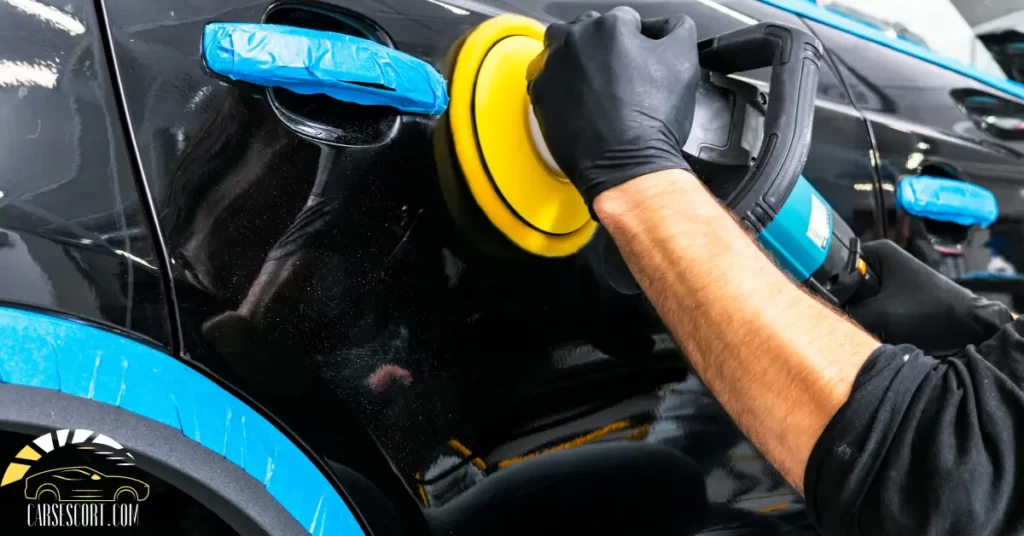
Step 5: Prepare the exterior for the job.
Clean your vehicle thoroughly to remove dirt, debris, and contaminants from the paint surface. Wash the car with soap and water and dry it completely before polishing.
Use a clay bar to remove any embedded contaminants that may affect the polishing process if needed.
Step 6: Apply the polishing compound.
Apply a small amount of polishing compound onto the foam or wool polishing pad. Spread the compound evenly over the pad, but avoid applying too much as it can sling off during polishing.
Step 7: Set up the drill.
Attach the polishing pad to the drill according to the manufacturer’s instructions. Set the drill to a low-speed setting and gradually increase the speed as needed during polishing.
Step 8: Polish the car
Hold the drill firmly with both hands and place the polishing pad onto the car’s paint surface. Turn on the drill and begin polishing using overlapping back-and-forth or circular motions.
Apply light to moderate pressure and avoid staying in one spot for too long as it can cause heat buildup and damage the paint.
Step 9: Check your progress.
Periodically stop and wipe off the excess polish with a microfiber cloth to check your progress. Inspect the paint surface for any remaining defects and continue polishing as needed until you achieve the desired gloss level.
Step 10: Finish the polishing process.
Once you have completed the polishing process, use a clean microfiber cloth to remove any remaining polish residue and buff the paint to a high shine. If you have used painter’s tape to protect certain areas, carefully remove it after polishing.
Step 11: Final Touches.
Inspect the paint surface for any remaining imperfections and touch up as needed. Follow up with a coat of wax or sealant to protect the freshly polished paint and maintain the glossy finish.
Have A Look at Our Recommended Tolls:
- Chemical Guys Random Orbital Polisher, Pads, Polishes & Compounds Kit
- Buffer Polisher, Dual Action Random Orbital Car Polisher, Car Detailing Kit
Cons of Using drill or angle grinder for polishing and waxing car
Using a drill or angle grinder for polishing and waxing a car can have some potential drawbacks:
- Both drills and angle grinders can be aggressive and may remove more material than necessary, resulting in paint damage or swirl marks if not used cautiously.
- Due to their high speeds and power, these tools can be difficult to control, especially for inexperienced users. This can lead to uneven polishing or waxing, causing an inconsistent finish on the car’s paint surface.
- Both drills and angle grinders generate heat during operation, harming the car’s paint. Excessive heat of the power tool can cause paint burning, melting, or other damage, resulting in an unsightly appearance.
- If not used properly, drills or angle grinders can inadvertently damage the paint, especially if abrasive pads or compounds are used excessively or with too much pressure. Improper use can result in scratches, swirl marks, or other imperfections on the car’s paint.
- Drills and angle grinders are powerful tools that require proper safety precautions. Failure to follow safety guidelines can result in personal injury or property damage.
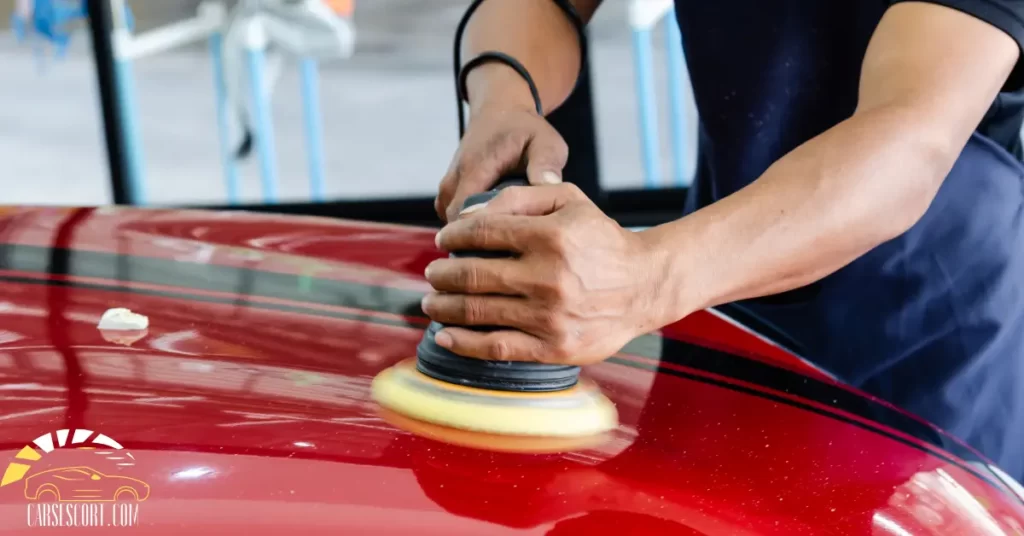
You May Also Like To Read:
What if You Don’t Own a Variable Speed Angle Grinder?
If you don’t own a variable-speed angle grinder, there are alternative ways to polish your vehicle. You can use a polishing kit with a drill, hand-polish with a microfiber cloth, or hire a professional detailer or auto body shop.
Remember to follow proper polishing techniques, use high-quality inexpensive dual action polishers compounds and tools, and regularly check your progress to achieve a safe and effective polish for your car’s paint.
How to use drill polishing pads?
To use drill polishing pads, gather your materials, including a drill, foam or wool polishing pad, and a suitable polishing compound. Prep your car by cleaning it thoroughly and applying a small amount of polishing compound onto the pad.
Attach the pad to the drill following the manufacturer’s instructions, and set the drill to a low-speed setting.
Hold the rotary tools firmly with both hands and begin polishing the car’s paint surface using overlapping, back-and-forth, or circular motions.
Check your progress regularly, and continue polishing until you achieve the desired gloss level.
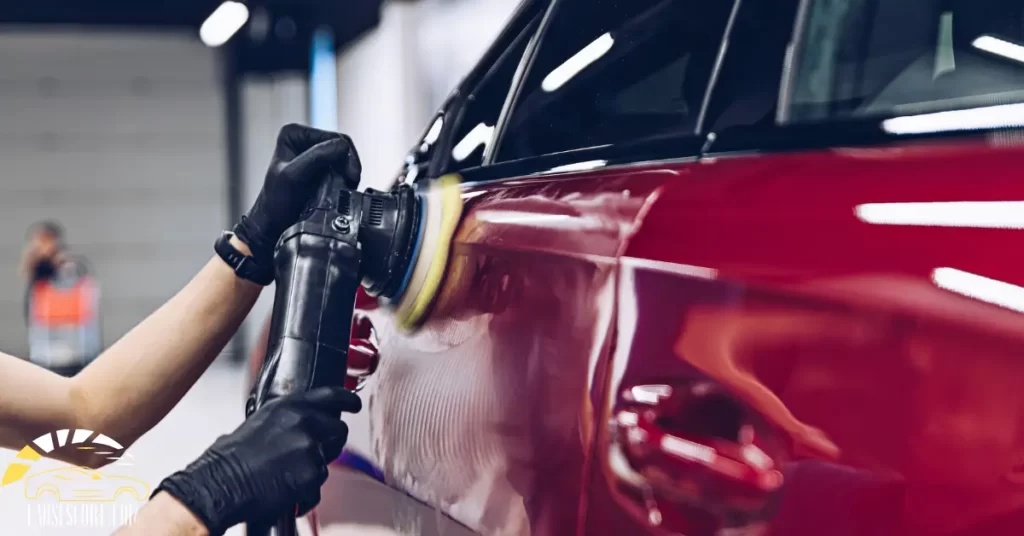
Best Car Polisher Drill Attachment
FAQ
Can you wax a car with a drill?
Yes, you can wax a car with a drill. Attach a foam or wool buffing pad to the drill, apply the wax onto the pad, and use the drill to spread and buff the wax onto the car’s paint surface.
Is a Grinder the Same as a Polisher?
No, a grinder is not the same as a polisher. While both tools may appear similar, grinders are typically used for cutting and grinding metal, while polishers are specifically designed for polishing paint and other surfaces.
Can angle grinders be used for car detailing?
Yes, angle grinders can be used for car detailing, but caution is needed as they can be aggressive and may damage the paint if not used properly. It’s important to use appropriate polishing pads and techniques and avoid excessive pressure or heat buildup.
Can I use an orbital sander to polish my car?
Yes, an orbital sander can be used to polish a car, but using the correct polishing pads and a low-speed setting is important to avoid damaging the paint. Orbital sanders are generally less aggressive than angle grinders and may be suitable for lighter polishing tasks.
What is the Difference Between a Buffer and a Grinder?
The main difference between a buffer and a grinder is their intended use. Buffers are specifically designed for polishing paint and other surfaces, while grinders are primarily used for cutting and grinding metal. Buffers typically operate at lower speeds and have softer, more forgiving pads, whereas grinders have harder pads and higher speeds for cutting and grinding tasks.
Affiliate Disclosure: Cars Escort is a participant in the Amazon Services LLC Associates Program. As an Amazon Associate, we earn from qualifying purchases made through affiliate links on our site. Read Our Disclaimer .

